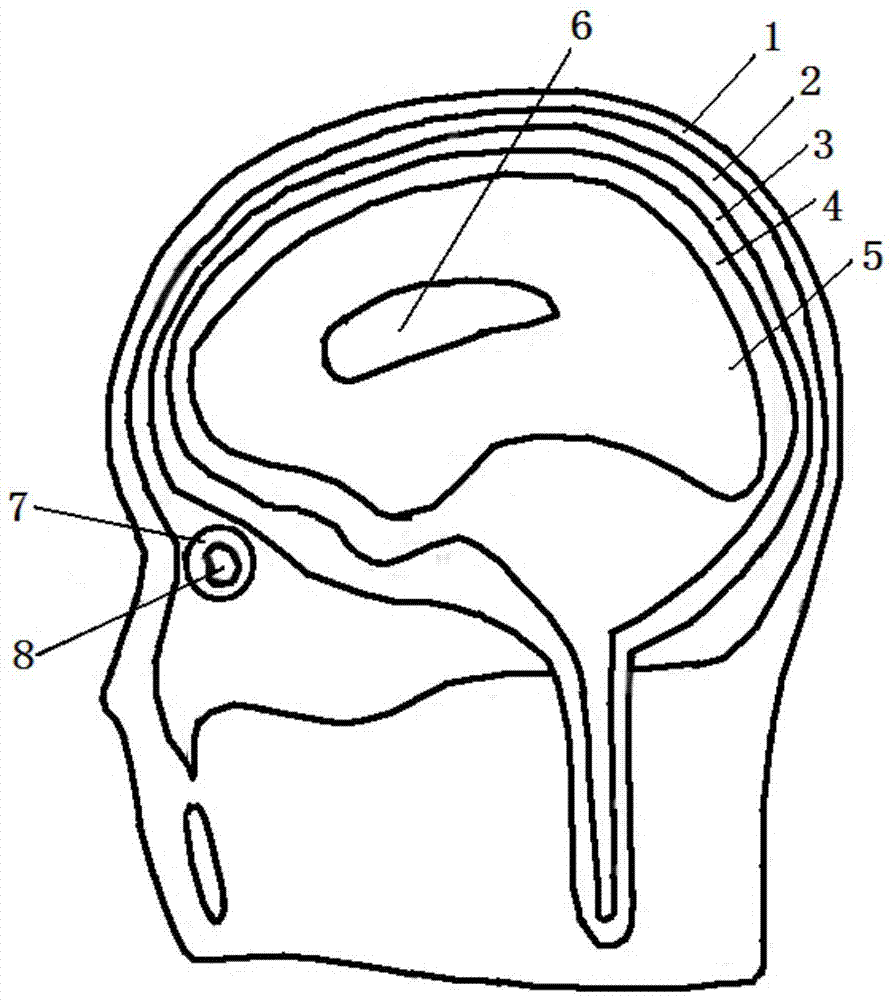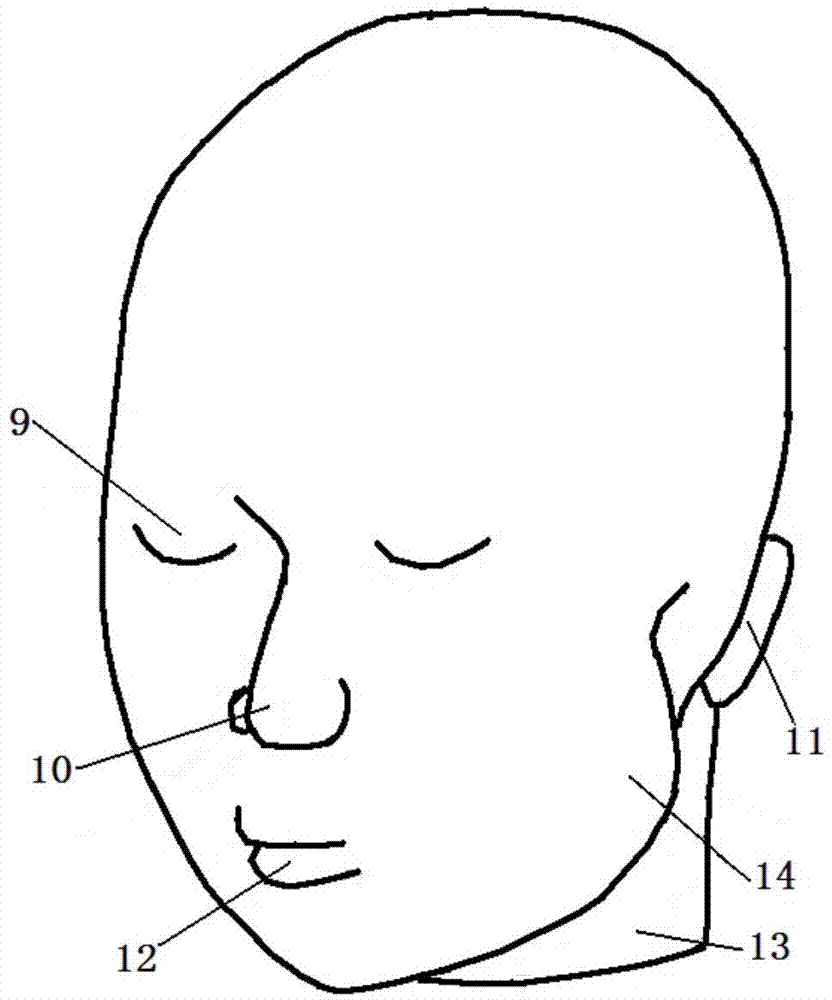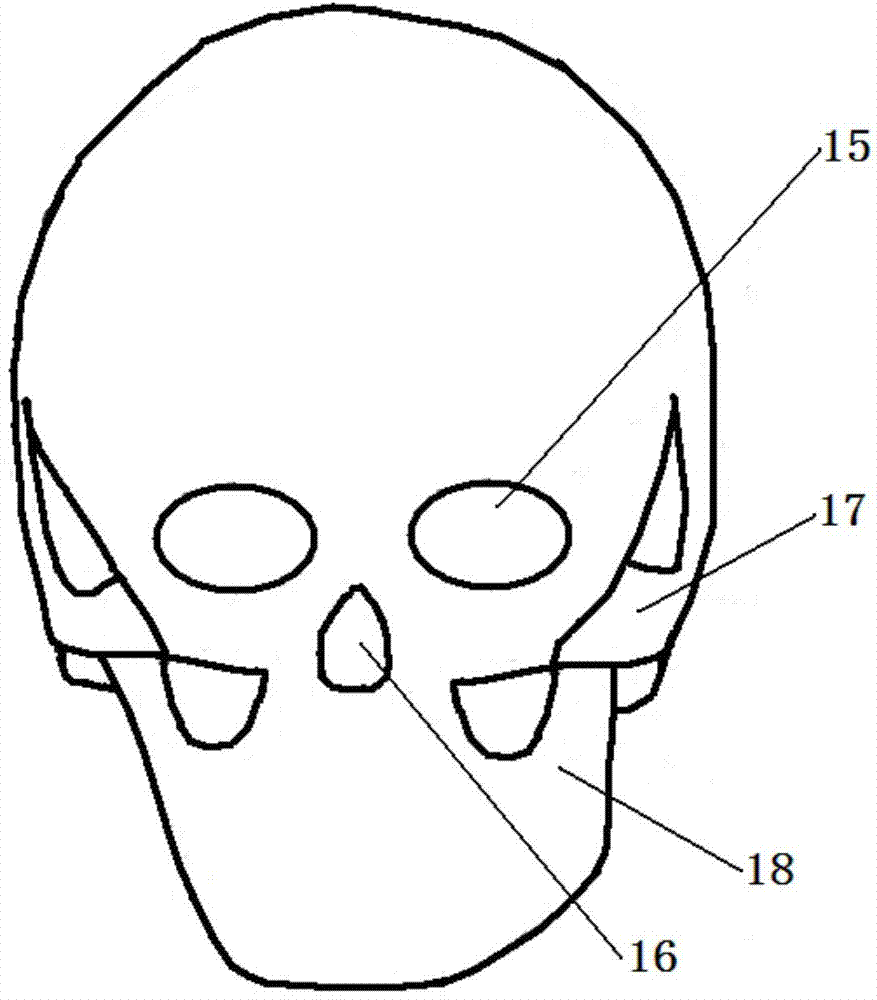Finite element simulation model for simulating real human brain electrical characteristic distribution
A technology of real human body and simulation model, which is applied in the field of human cranium simulation model, can solve problems such as difficult to realize, great harm to human body, and influence of induced electromagnetic field distribution can not be ignored, so as to simplify follow-up operation, easy to use, improve accuracy and reliability sexual effect
- Summary
- Abstract
- Description
- Claims
- Application Information
AI Technical Summary
Problems solved by technology
Method used
Image
Examples
Embodiment Construction
[0035] A finite element simulation model for simulating the distribution of real human cranial EEG characteristics according to the present invention will be described in detail below in conjunction with the embodiments and drawings.
[0036] A finite element simulation model of the present invention that simulates the distribution of real human brain electrical characteristics can reflect the structural characteristics and electrical characteristics of human brain tissue more realistically and finely Brain tissue electrical characteristics information, using this model for simulation research, can obtain more accurate and convincing prediction results. The model of the present invention is not only applicable to the research field of transcranial magnetic stimulation, but also applicable to other research fields of electromagnetism of human brain tissue.
[0037] like figure 1As shown, a finite element simulation model of the present invention that simulates the distribution...
PUM
 Login to View More
Login to View More Abstract
Description
Claims
Application Information
 Login to View More
Login to View More - R&D
- Intellectual Property
- Life Sciences
- Materials
- Tech Scout
- Unparalleled Data Quality
- Higher Quality Content
- 60% Fewer Hallucinations
Browse by: Latest US Patents, China's latest patents, Technical Efficacy Thesaurus, Application Domain, Technology Topic, Popular Technical Reports.
© 2025 PatSnap. All rights reserved.Legal|Privacy policy|Modern Slavery Act Transparency Statement|Sitemap|About US| Contact US: help@patsnap.com



